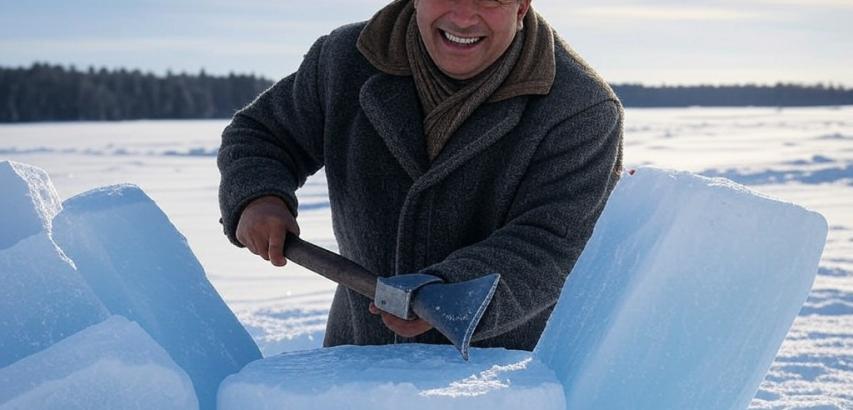Ice plays a central role in many celebrations and events, serving both functional and decorative purposes. From keeping beverages chilled to creating stunning ice sculptures, ice adds an element of freshness, elegance, and creativity. However, ice cutting and reusing techniques can significantly enhance the sustainability and cost-effectiveness of these events. This article explores the art of ice cutting and innovative ways to reuse ice in celebrations, promoting eco-friendly practices.
Ice Cutting Techniques
Ice cutting is a process that involves shaping and carving ice blocks into desired forms for decorative or practical purposes. Here are some techniques commonly used:
Manual Ice Cutting
Tools Used: Ice saws, chisels, and picks.
Steps:
Select a clear, solid block of ice.
Use a saw to cut the block into rough shapes.
Refine the shape with chisels and picks for intricate designs.
Best suited for small-scale, detailed projects like ice sculptures or personalized ice cubes.
Machine-Assisted Cutting
Tools Used: Chainsaws, band saws, and CNC ice carving machines.
Steps:
Program the design into the machine or outline it manually on the ice block.
Use the machine to carve precise shapes.
Ideal for large-scale events requiring multiple or complex designs.
Hot Wire Cutting
Tools Used: Electrically heated wire.
Steps:
Pass the hot wire through the ice block to achieve clean, straight cuts.
Smooth the edges for a polished look.
Commonly used for geometric designs or custom shapes.
Applications of Ice in Celebrations
Ice Sculptures
Elegant centerpiece designs for weddings, corporate events, or anniversaries.
Themes can range from simple monograms to intricate animals or scenes.
Drink Displays
Ice blocks with embedded LED lights to create glowing drink stations.
Carved ice buckets to chill beverages.
Ice Bars
Entire bars constructed from ice for a winter-themed experience.
Often paired with cocktail stations and seating made of ice.
Reusing Ice for Sustainability
Reusing ice after celebrations is a practical way to reduce waste and energy consumption. Here are some effective methods:
Melting and Refreezing
Collect unused ice and allow it to melt.
Filter the water and refreeze it into new shapes for future use.
Suitable for ice cubes, drink displays, or basic sculptures.
Repurposing for Cooling
Use leftover ice to cool drinks, food storage containers, or outdoor setups for the next event.
Store ice in insulated containers to preserve it longer.
Irrigation
Allow the ice to melt naturally and use the water for plants, gardens, or landscaping.
This is an eco-friendly solution that minimizes water wastage.
Creative DIY Projects
Utilize partially melted ice for fun DIY crafts, such as painting or experiments for children.
Incorporate ice into homemade frozen treats like popsicles or slushies.
Preserving Ice for Artistic Use
Recut or reshape large leftover pieces for smaller decorations, like drink toppers or floral ice bowls.
Benefits of Ice Reuse
Cost Savings: Reduces the need to purchase or produce additional ice for future events.
Environmental Impact: Minimizes water and energy waste.
Versatility: Provides creative options for decor and utility.
Ice cutting and reusing practices make celebrations not only more visually appealing but also environmentally conscious. By adopting innovative techniques and emphasizing sustainability, event organizers can elevate their celebrations while promoting responsible resource usage.
